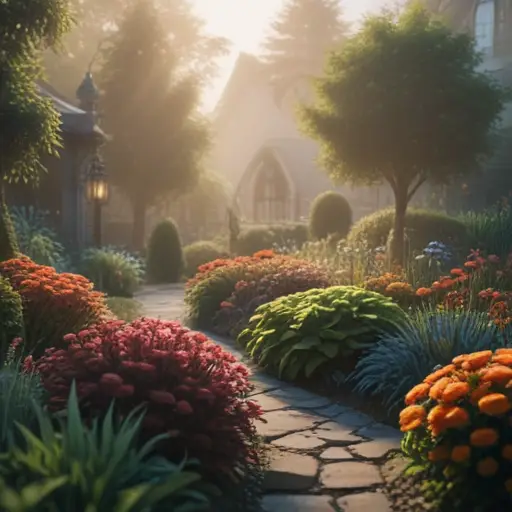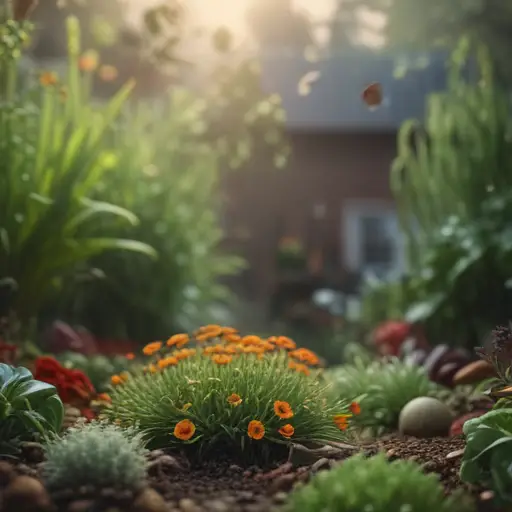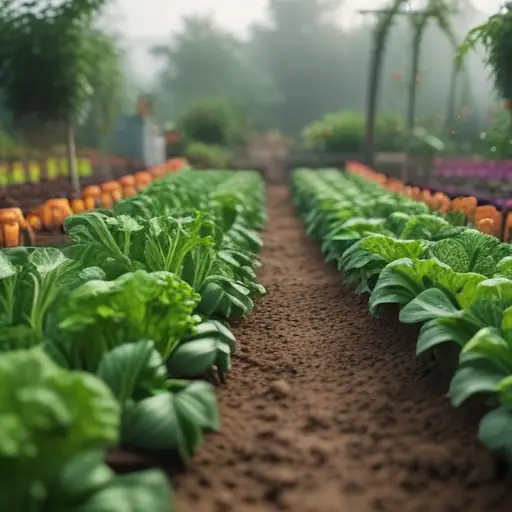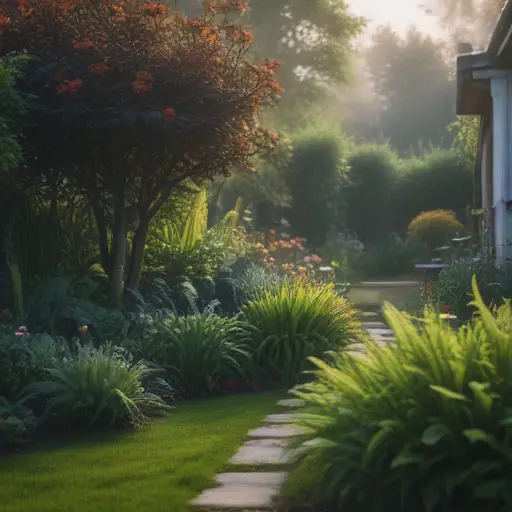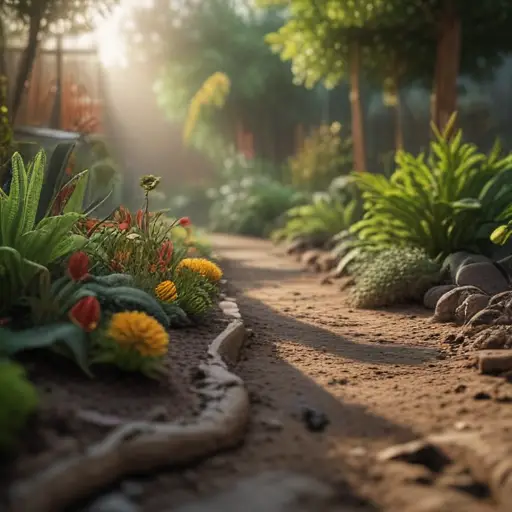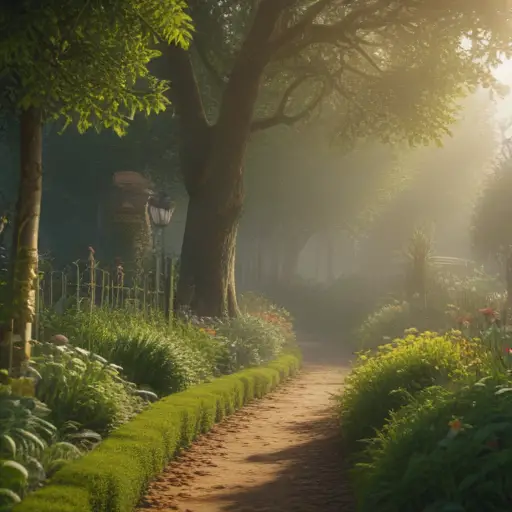Tips for Planning Your Garden Layout
Planning Your Garden Layout
Planning your garden layout is like playing a game of Tetris, but with plants instead of blocks. You have to strategically place each vegetable, herb, and flower to maximize space and sunlight. It’s like creating a green masterpiece in your backyard canvas. Just remember to leave room for pathways so you can navigate through your garden without trampling your precious plants. And don’t forget to consider the height of your plants – you don’t want your towering sunflowers blocking the sun from your delicate lettuce. So grab your graph paper, a pencil, and unleash your inner landscape architect as you design the garden of your dreams.
Choosing the Right Plants
One interesting fact about laying out a garden is that using curved pathways and borders can create a more visually appealing and natural flow in the garden design. Curved lines are often more pleasing to the eye than straight lines, and can help create a sense of movement and harmony in the garden space. Additionally, curved pathways can also help guide visitors through the garden and encourage exploration and discovery.
When choosing the right plants for your garden, it’s important to consider your climate, soil type, and sunlight exposure. You don’t want to be the gardener who tries to grow cacti in a rainy region or sun-loving flowers in a shady corner. Do your research and pick plants that will thrive in your specific conditions. And don’t forget to think about the aesthetic appeal – mix and match colors, textures, and heights to create a visually stunning garden that will make your neighbors green with envy. So grab your gardening gloves and get ready to plant the perfect combination of flora that will make your garden the envy of the neighborhood.
Creating Pathways and Borders
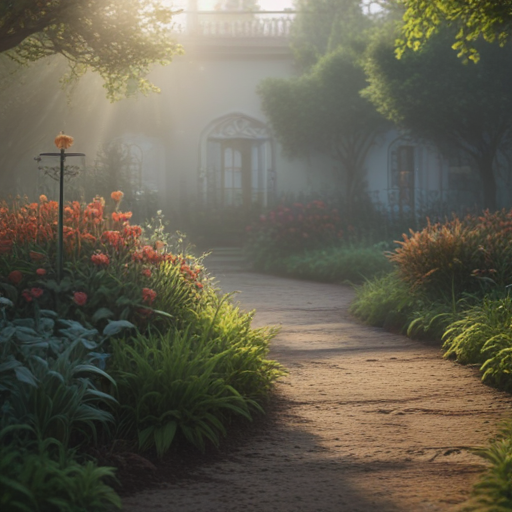
Creating pathways and borders in your garden is like adding the finishing touches to a masterpiece. Pathways not only provide practical access to different areas of your garden but also add structure and visual interest. Whether you choose gravel, stepping stones, or mulch, make sure your pathways are wide enough for easy navigation and consider adding lighting for a magical nighttime ambiance. Borders, on the other hand, help define the edges of your garden beds and can prevent plants from spilling over into each other. You can use a variety of materials for borders, such as bricks, rocks, or even plants like lavender or boxwood for a natural look. Just remember to keep your pathways and borders in harmony with the overall design of your garden.
When designing your pathways, think about how you want people to move through your garden. Do you want a straight path that leads directly to a focal point, like a fountain or a bench? Or perhaps a meandering path that encourages exploration and discovery? Consider the flow of traffic and create pathways that guide visitors through your garden in a natural and intuitive way. And don’t forget to leave room for unexpected detours and hidden nooks that invite people to linger and enjoy the beauty of your garden.
Borders can also serve a practical purpose in addition to their aesthetic appeal. They can help retain soil and mulch, prevent weeds from encroaching on your garden beds, and provide a neat and tidy appearance. When choosing plants for your borders, think about their growth habits and maintenance requirements. Opt for low-maintenance plants that won’t require frequent trimming or pruning, and consider mixing different textures and colors to create a visually interesting border that complements the rest of your garden. With a well-designed pathway and border system, your garden will not only look beautiful but also be functional and easy to maintain.
As you lay out your garden pathways and borders, consider incorporating elements that reflect your personal style and taste. Whether you prefer a formal, symmetrical layout with straight lines and geometric shapes, or a more relaxed, informal design with curved pathways and natural borders, let your creativity shine through. Experiment with different materials, colors, and textures to create a unique and inviting garden that reflects your personality. And don’t be afraid to mix and match styles to create a garden that is truly one-of-a-kind. With a little planning and creativity, you can transform your outdoor space into a beautiful and welcoming oasis that you’ll love to spend time in.
Maintaining Your Beautiful Garden
Did you know that planting taller plants at the back of your garden bed can create a sense of depth and make your garden appear larger? This technique, known as ‘layering,’ can help create a visually appealing and well-balanced garden design.
Maintaining your beautiful garden is like keeping a work of art in pristine condition. Regular upkeep is key to ensuring that your pathways stay clear and your borders remain tidy. Keep an eye out for weeds creeping in and plants encroaching on your pathways, and be sure to trim and prune as needed to maintain the shape and structure of your garden. Regular watering, fertilizing, and mulching will help keep your plants healthy and vibrant, ensuring that your garden continues to thrive and delight both you and your visitors. So roll up your sleeves, grab your gardening tools, and show your garden some love to keep it looking its best year-round.

